This travel-documentation is dedicated to the family members who passed away, my father, my older and younger brother, as well as my younger and youngest
sister. To those people who were separated from their families because of war, who had to leave their homeland and who suffer as a result.
- in January 2013 - Chau Tran (Qing Lian)
During the development of this website our mother also passed away.
- in August 2013 - Chau Tran (Qing Lian)
Singapore -
Australia -
China/Shantou -
China/Guangzhou -
China/Guilin -
China/Hongkong -
Australia -
Singapore
|
25.02. - 03.03.2001, China/Guangzhou:
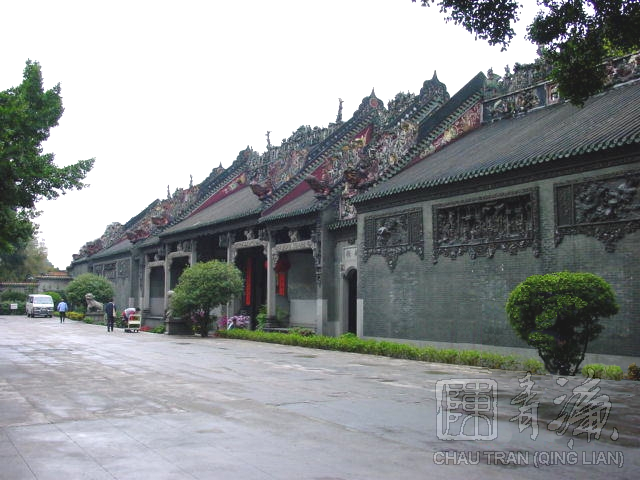
2001, Guangzhou also called "Wu yang Cheng / City of the 5 goats" is the capital of province Guangdong (Canton). At first we visit the "Chen Shi Shu Yuan / Chen-familyname academy", built in the famous cantonese style. Like Chaoshan-style the cantonese style is widespread all over the world, certainly where the cantonese live. - Chau Tran (Qing Lian)
|
|
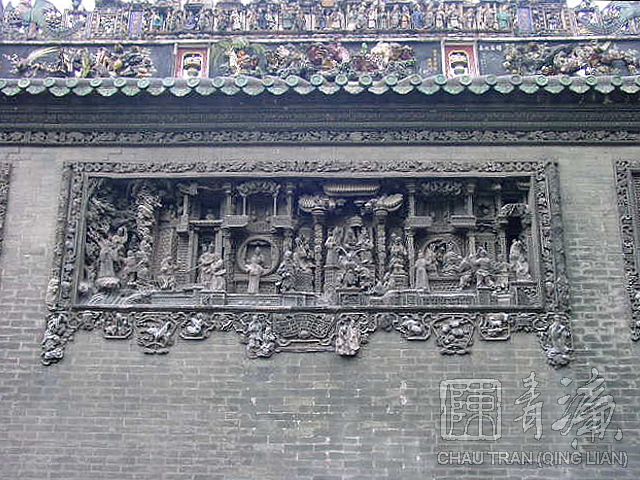
2001, On the outside wall one can see figures carved into the stone, depicting scenes from cantonese opera. - Chau Tran (Qing Lian)
|
|
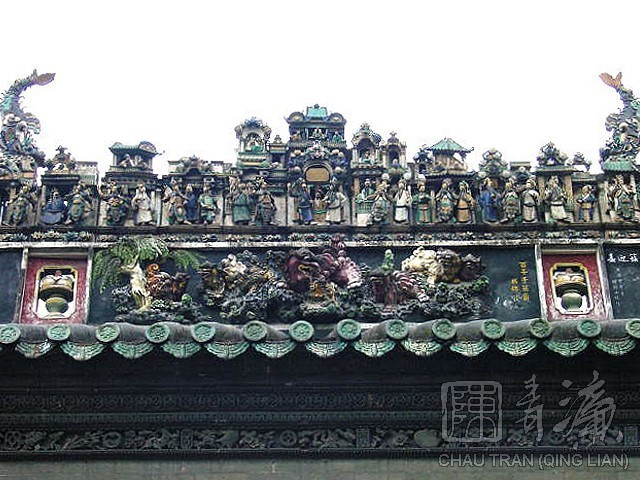
2001, On the roofs are unique ceramic figures of famous personalities. They illustrate the history of China, next to them holy animals and beautiful garden landscapes. - Chau Tran (Qing Lian)
|
|

2001, Crossbeam made of carved stone with figures from the history of China. - Chau Tran (Qing Lian)
|
|

2001, "Chen Shi Shu Yuan" once was a community-house, accessible for people with the familyname Chen only. In traditional China all persons with the same familyname belonged to one big social family. The tradition spread overseas where chinese people live, too. The house is a class listed monument today and accessible to the public. - Chau Tran (Qing Lian)
|
|

2001, At the entrancegate are pillars and crossbeams made of stone, on the bottom left of the photo one of two stonedrums. The red color of the lantern stands for festivity and luck in China. - Chau Tran (Qing Lian)
|
|

2001, Together with my mother in the receptionroom of the house. - Chau Tran (Qing Lian)
|
|
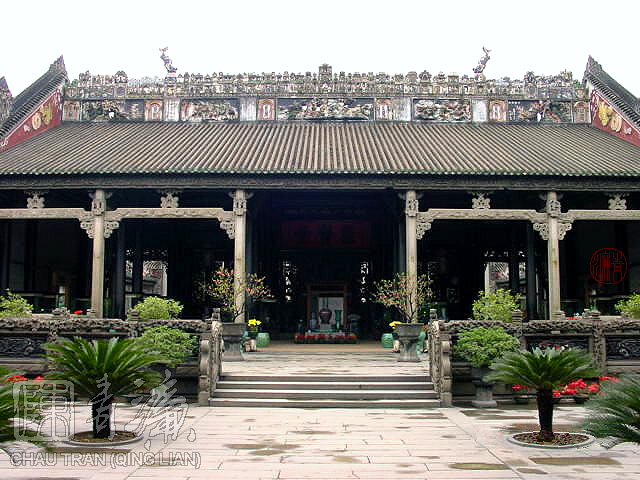
2001, All halls and saloons have crossbeams and pillars at the front, with motifs carved out of the stone. Some even have an elevated footing, like the one on this photo. - Chau Tran (Qing Lian)
|
|
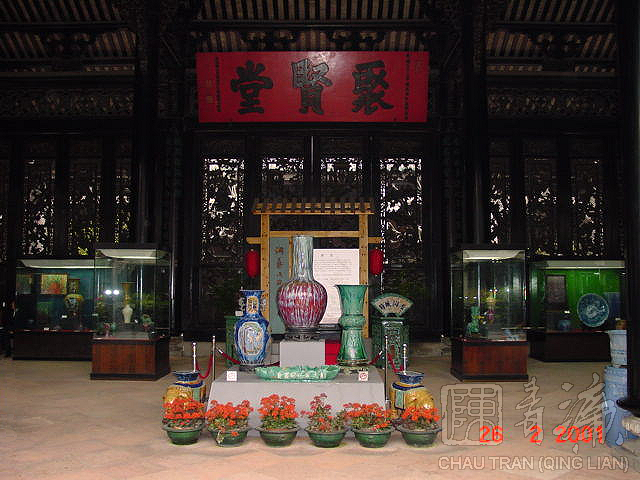
2001, Assemblyroom und meetingpoint of the wise. - Chau Tran (Qing Lian)
|
|

2001, Front of a hall. - Chau Tran (Qing Lian)
|
|

2001, "Chen Shi Shu Yuan" is a very large complex. One would get lost without a map. All corridors are roofed. For example on the photo you can see a roofed corridor leading across the courtyard. Despite of the rain the elevated corridor stays dry. - Chau Tran (Qing Lian)
|
|
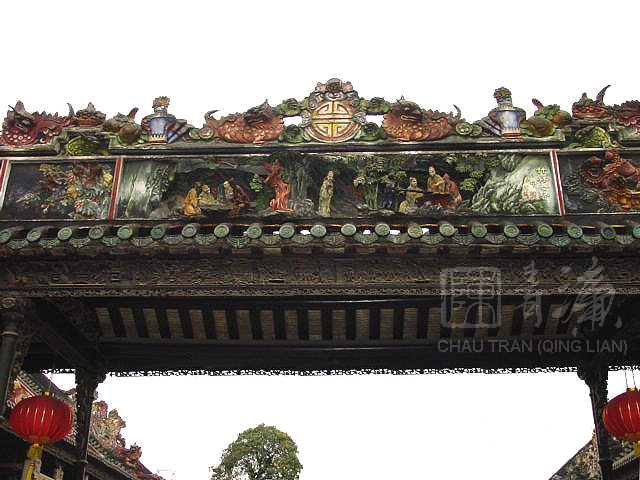
2001, The roof of the corridor leading across the courtyard shows many scenes from the history of China. Here you see the scene "Zhu Lin Qi Xian / 7 wise men in the bamboo forest", a famous story of old chinese literature. - Chau Tran (Qing Lian)
|
|
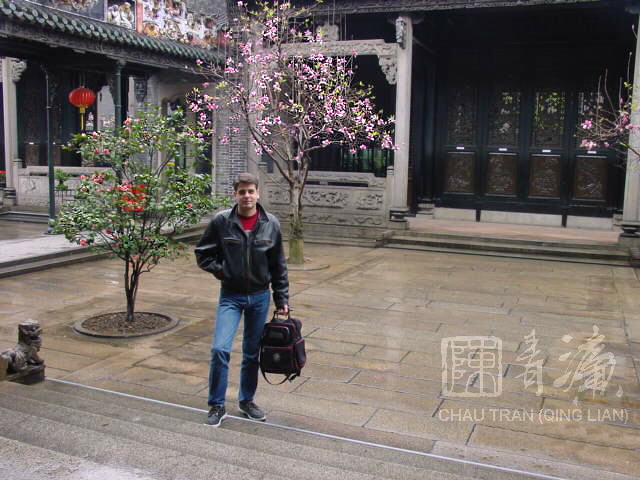
2001, Every saloon and hall has a courtyard, which is planted with adequate flowertrees. There are many courtyards in this house. - Chau Tran (Qing Lian)
|
|
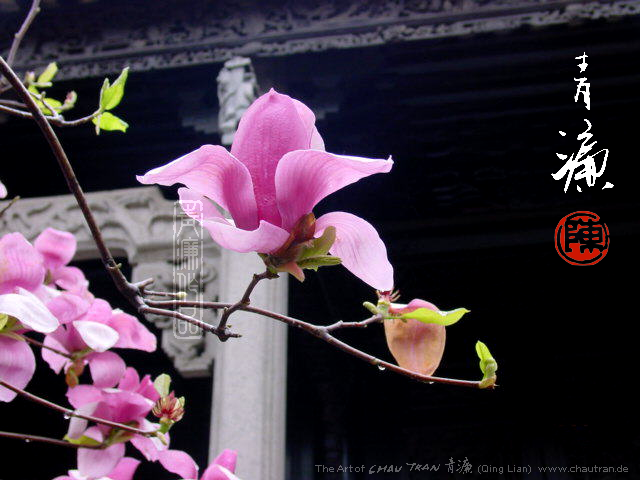
2001, In this courtyard the magnolias are blooming. - Chau Tran (Qing Lian)
|
|
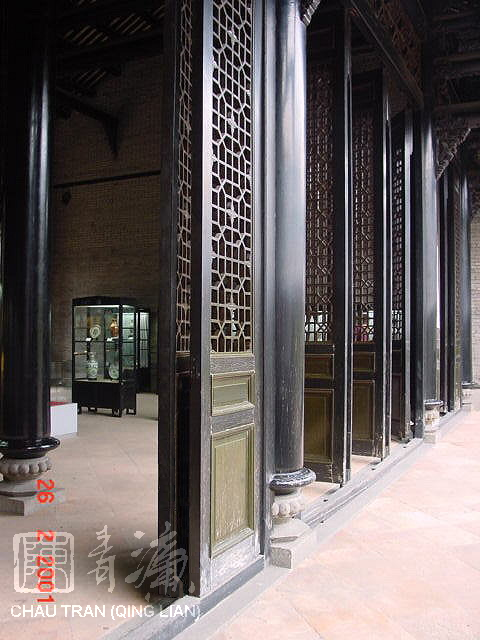
2001, Instead of a wall there is a row of artful wooden doors. One can decide flexibly how wide the opening is. - Chau Tran (Qing Lian)
|
|
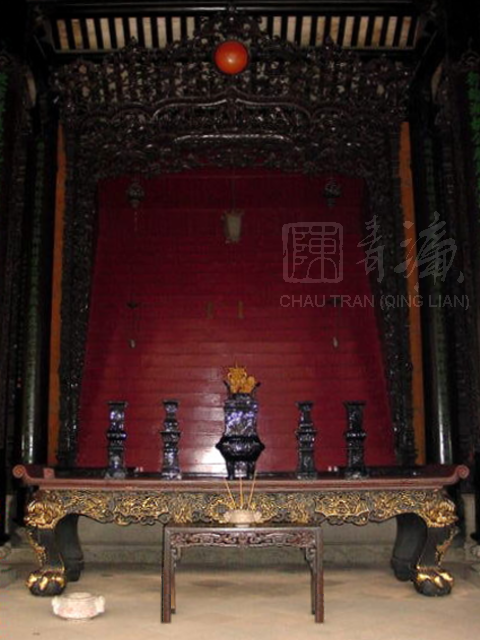
2001, The altair of the "Chen"-ancestors. - Chau Tran (Qing Lian)
|
|
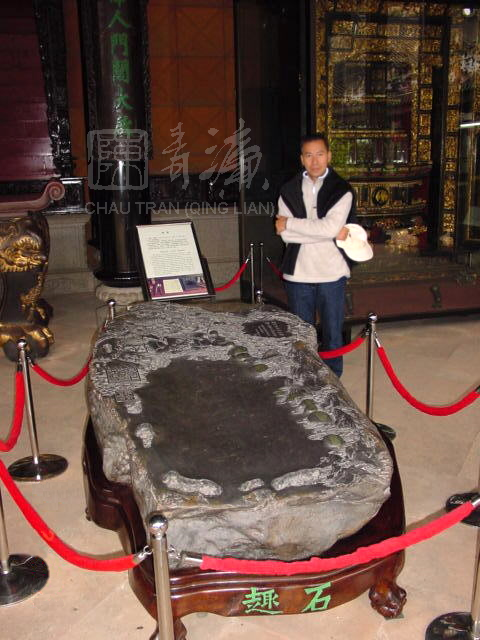
2001, A giant artful grinding stone in the house. - Chau Tran (Qing Lian)
|
|
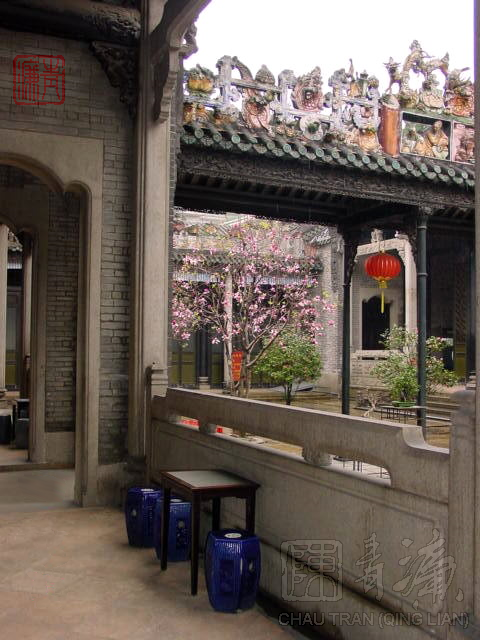
2001, From the breakroom with marble table and ceramic stool one can see the roof of the courtyard-corridor. - Chau Tran (Qing Lian)
|
|
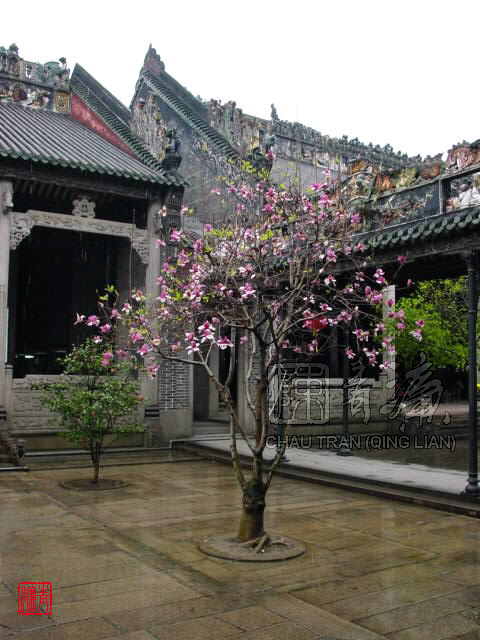
2001, One of the courtyards of "Chen Shi Shu Yuan / Chen-familyname academy". - Chau Tran (Qing Lian)
|
|
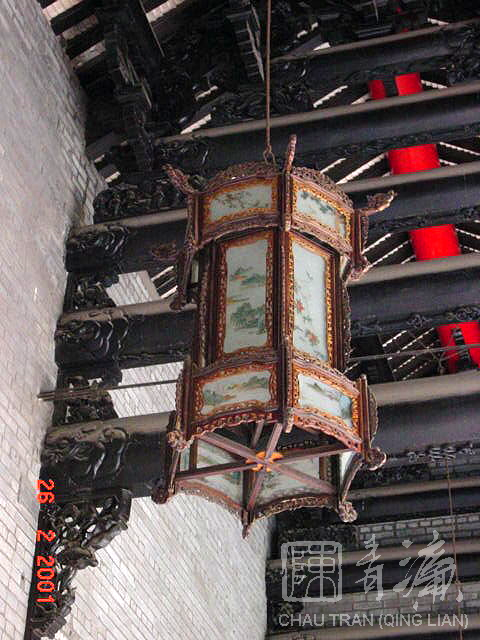
2001, The lanterns for the house are a custom-made design with painted glass and carved wooden frames. - Chau Tran (Qing Lian)
|
|
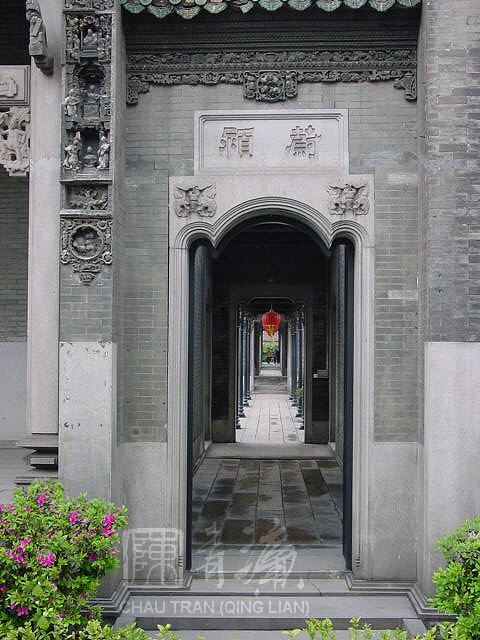
2001, There are many aisles in the house. One of them can be seen here. - Chau Tran (Qing Lian)
|
|

2001, From this hall one can see across the rainy courtyard to another saloon. - Chau Tran (Qing Lian)
|
|
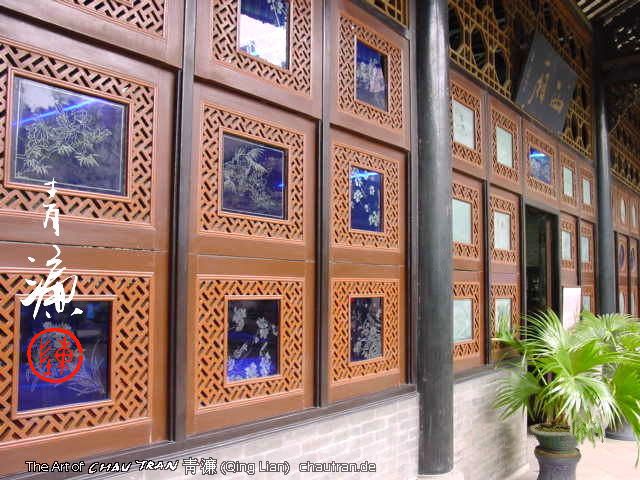
2001, This wall has a series of carved wooden windowframes with blue glass, engraved are themes of nature. - Chau Tran (Qing Lian)
|
|
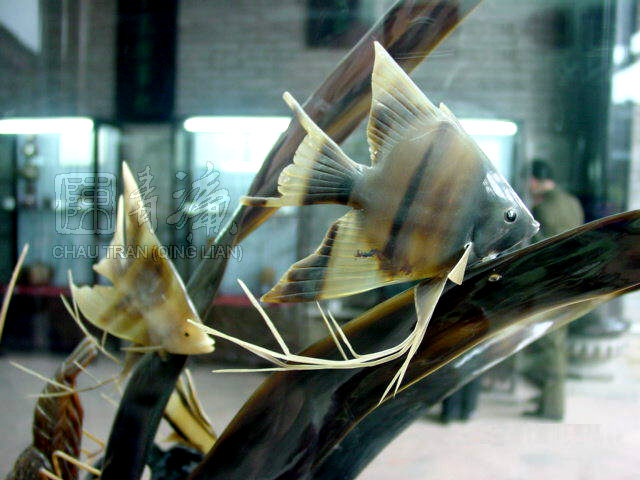
2001, High quality craftwork made of horn from capricorn and waterbuffalo. - Chau Tran (Qing Lian)
|
|

2001, Incredibly artfully made shrimps from jadestone with waterplants made of waterbuffalo-horn. - Chau Tran (Qing Lian)
|
|
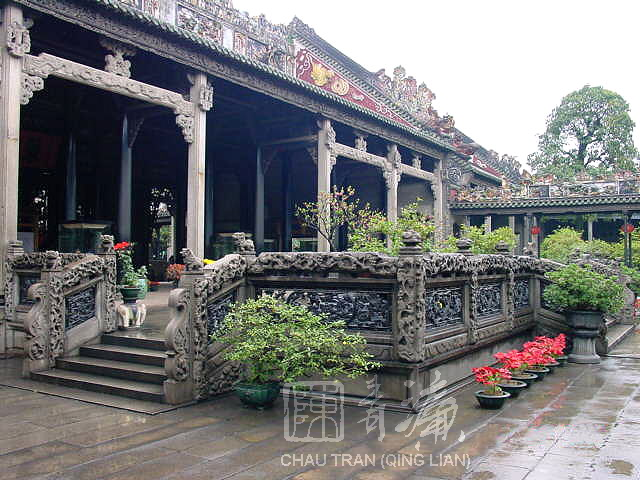
2001, Important halls have a raised grounding with patio and balustrade. Themes from nature like fruit, flowers or birds are carved into the stone. - Chau Tran (Qing Lian)
|
|
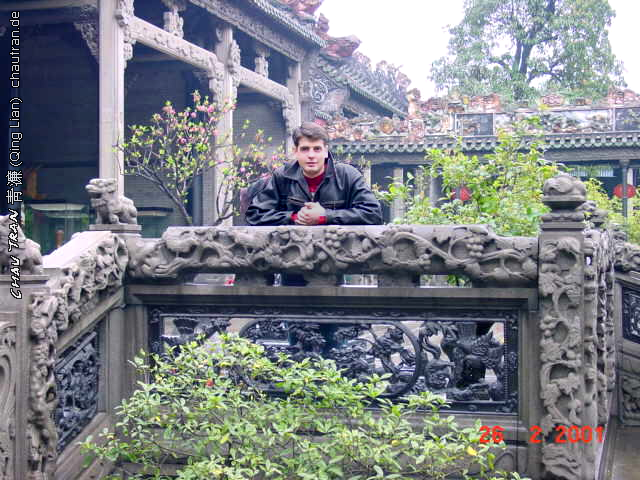
2001, In this balustrade one can recognize clearly the theme of lions and grapes. - Chau Tran (Qing Lian)
|
|
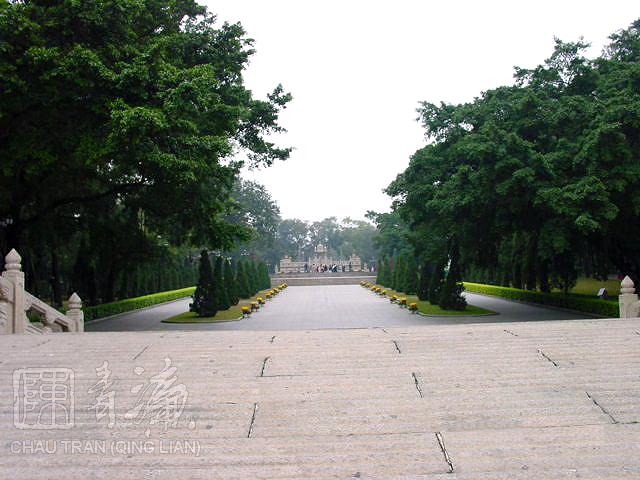
2001, In the "Huang Hua Gang Qi Shi Er Lie Shi Gong Yuan / park of the 72 fallen revolutionists from Huang Hua Gang" there also is the grave of the 72 heroes. As a child in basic school I learned about the story of this heroic rebellion from taiwan schoolbooks, in which I saw pictures of this grave. Now, 40 years later, I am standing in front of the original tomb. - Chau Tran (Qing Lian)
|
|

2001, Sworddance in the park. One form of chinese gymnastics. - Chau Tran (Qing Lian)
|
|

2001, Mothers with their babies meet in this idyllic park. - Chau Tran (Qing Lian)
|
|
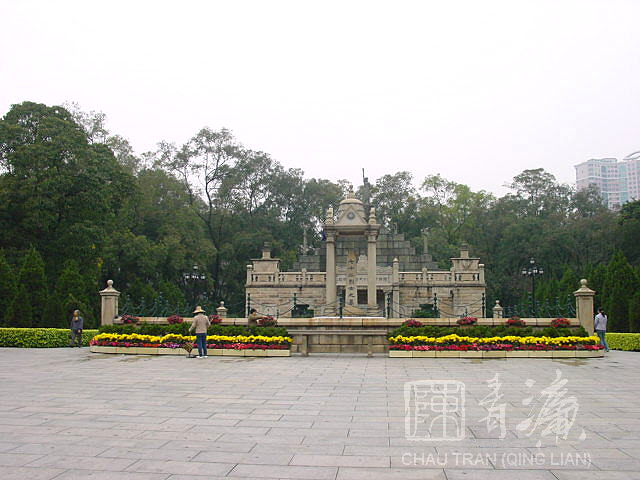
2001, The tomb of the 72 heroes is constantly maintained. - Chau Tran (Qing Lian)
|
|
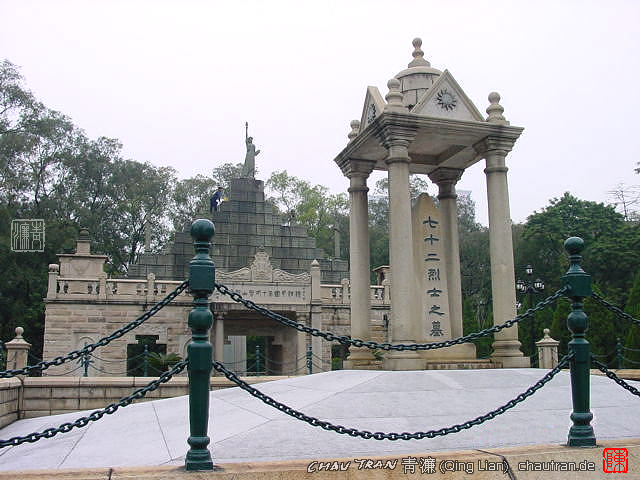
2001, On the ridge of the obelisks temple one can see a sun on all four sides. The sun is a symbol on the flag of the new China, an era before the communists. This flag is used by Taiwan until today. - Chau Tran (Qing Lian)
|
|
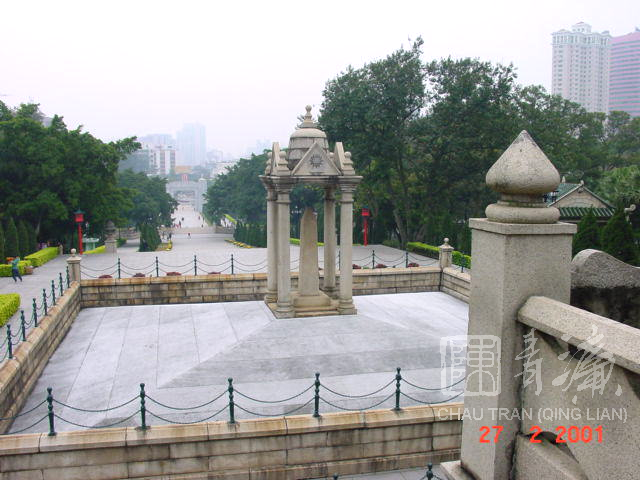
2001, From the tomb one can see the entrancegate of the site. - Chau Tran (Qing Lian)
|
|
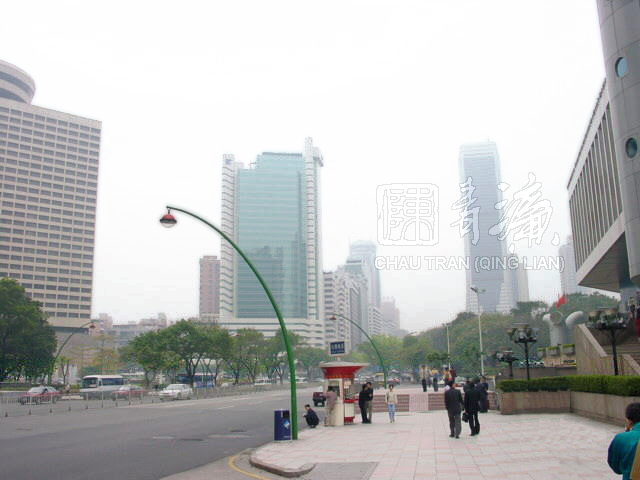
2001, A streetcorner of Guangzhou. - Chau Tran (Qing Lian)
|
|
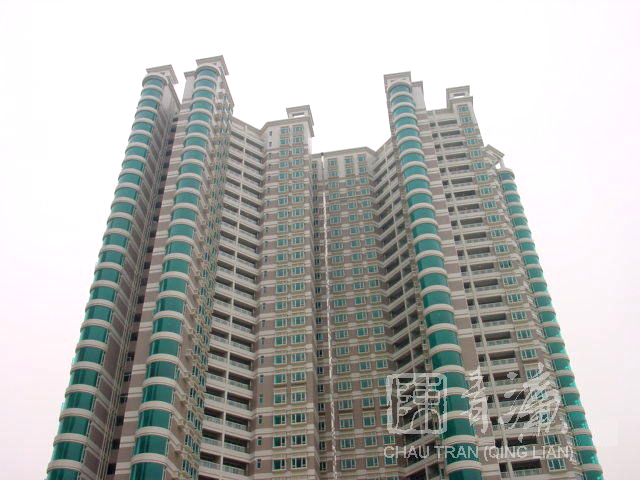
2001, New high-rise apartment buildings. - Chau Tran (Qing Lian)
|
|
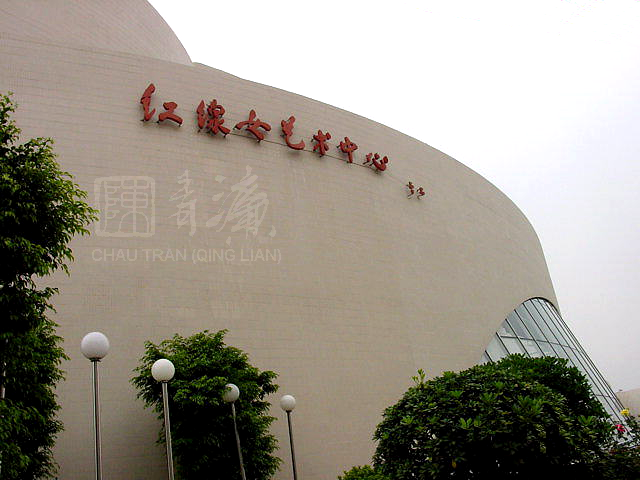
2001, In mainland-china "Yao Xuanqiu" became a living legend of chaozhou-opera and also in mainland-china "Hong XianNu" became a living legend of cantonese opera like some of her colleagues in Hongkong. Photo: "Hong XianNu" artcentre in Guangzhou, where the story of cantonese opera in mainland china is on exhibition. - Chau Tran (Qing Lian)
|
|
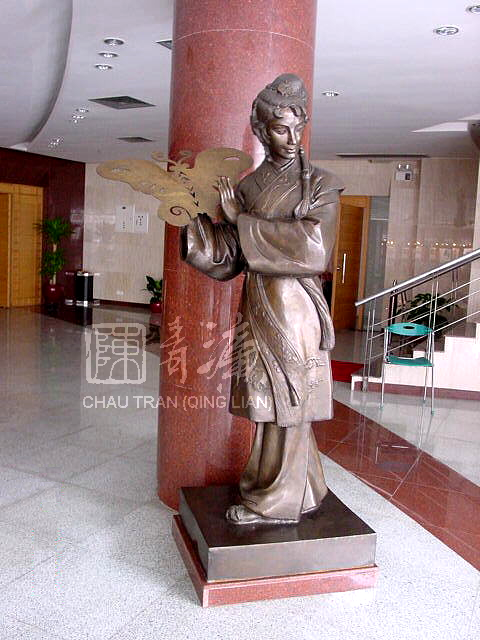
2001, Outstanding roles of "Hong XianNu" were for example in the play "Sou Shu Yuan / Searching through the university" a slave who tries to flee her fate. She believes that her miserable life is not predetermined, like buddhistic religion asserts.
In "Xi Fan / Yearning for normal life" a nun, who was deported to a convent as a child like many other children before, to absolve her parents from their sins and herself for her own sins. As a grownup she yearns for a normal life and flees from the monastery.
Photo: A bronze-statue of the slave in the play "Sou Shu Yuan".- Chau Tran (Qing Lian)
|
|
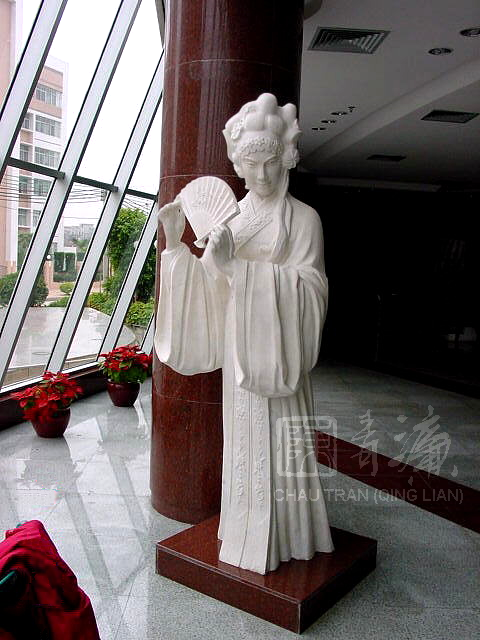
2001, In the play "Li Xiang Jun" she plays Li Xiang Jun an intellectual singer and musician, a profession which was considered as classless up to 100 years ago. Despite of the degradation through the greedy powerful authorities her fighting spirit for an ideal world never gets lost.
Photo: The statue of her role "Li Xiang Jun" with the "Tao Hua Shan / Peachblossomfan" in her hand, an important element of the play. - Chau Tran (Qing Lian)
|
|
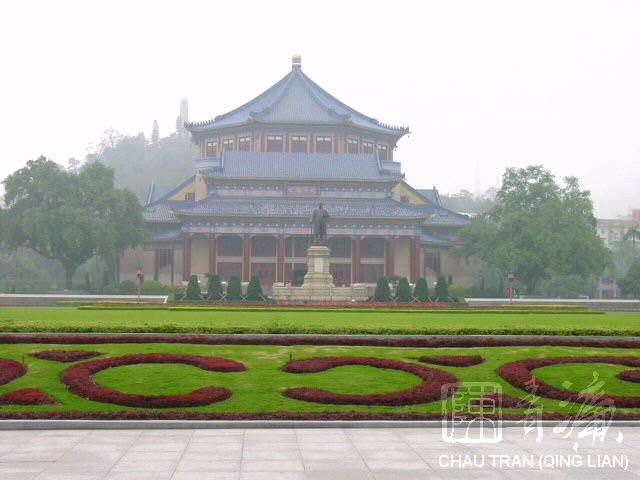
2001, In his hometown Guangzhou, capital of province Guangdong, father of the nation Sun Zhong-shan (Sun Yat-sen, 1866-1925) was honored with a giant memorial hall.
- Chau Tran (Qing Lian)
|
|
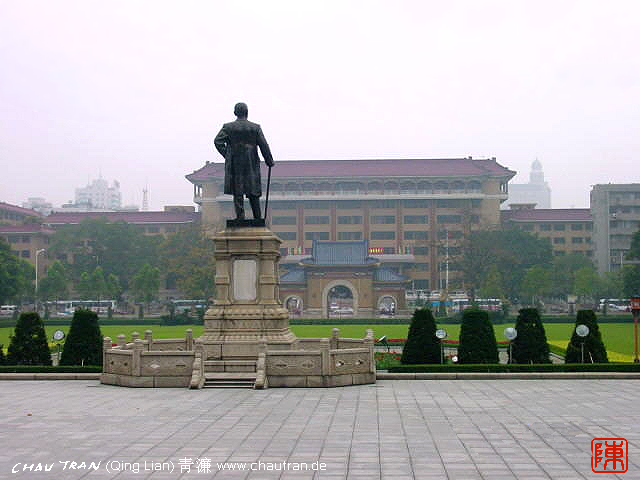
2001, From the forecourt of the memorial hall one can see the entrancegate with the blue ceramic tile roofs. - Chau Tran (Qing Lian)
|
|

2001, The four famous words "Tian xia wei gong / What is under heaven is for all" of the father of the nation are arranged in his original handwriting on a plate right above the entrance of the memorial hall. - Chau Tran (Qing Lian)
|
|
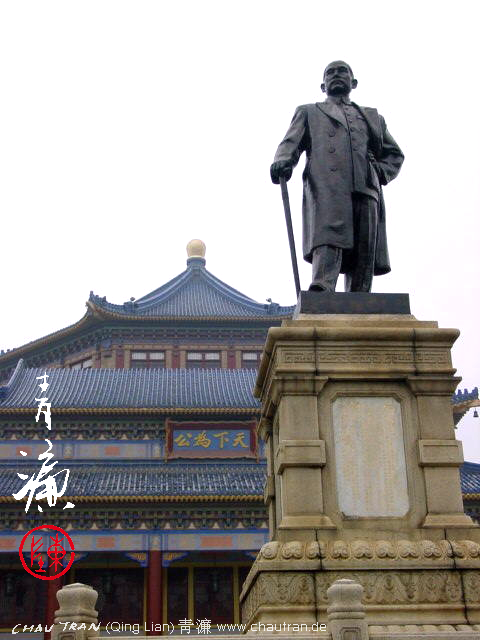
2001, Bronzestatue of the father of the nation on the forecourt of the memorial hall. - Chau Tran (Qing Lian)
|
|
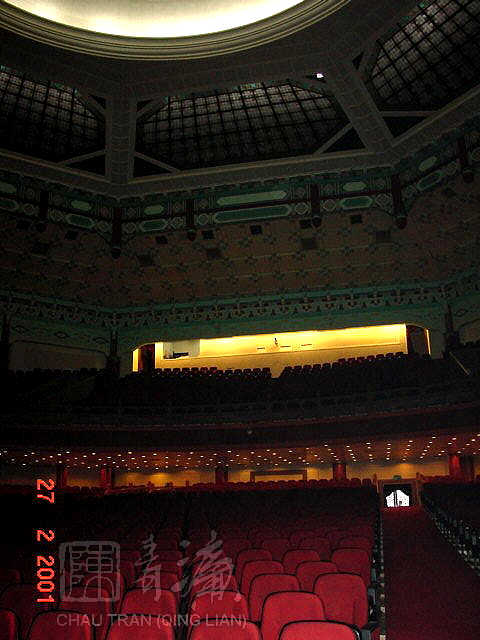
2001, Inside the memorial hall of the father of the nation Sun Zhong-shan (Sun Yat-sen, 1866-1925). - Chau Tran (Qing Lian)
|
|
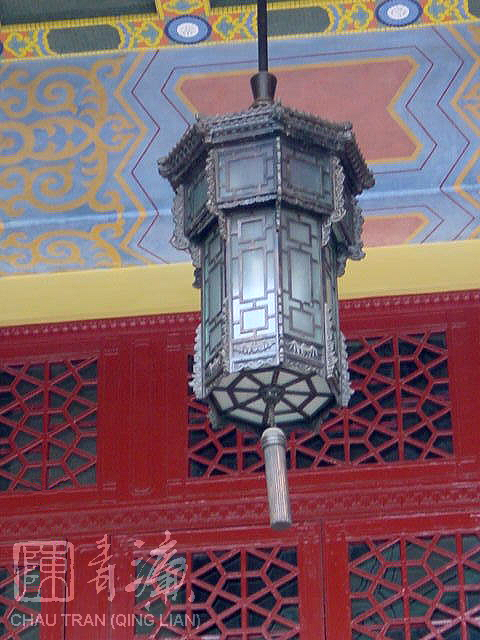
2001, The lanterns made with copperframes and glass are a custom product for the memorialhall. - Chau Tran (Qing Lian)
|
|
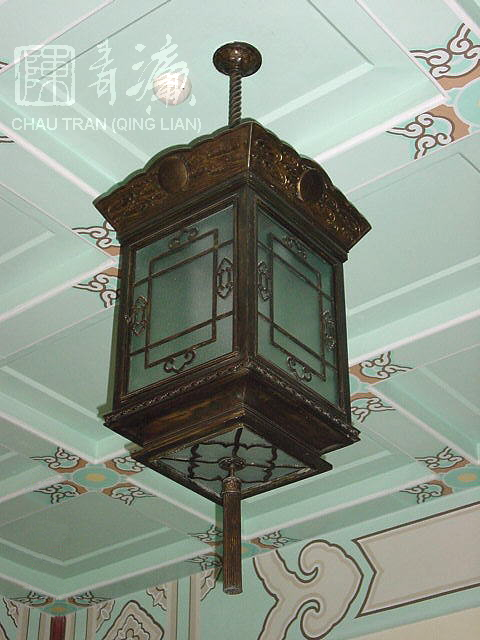
2001, The lanterns in the foyer were also custommade for the memorial hall. - Chau Tran (Qing Lian)
|
|
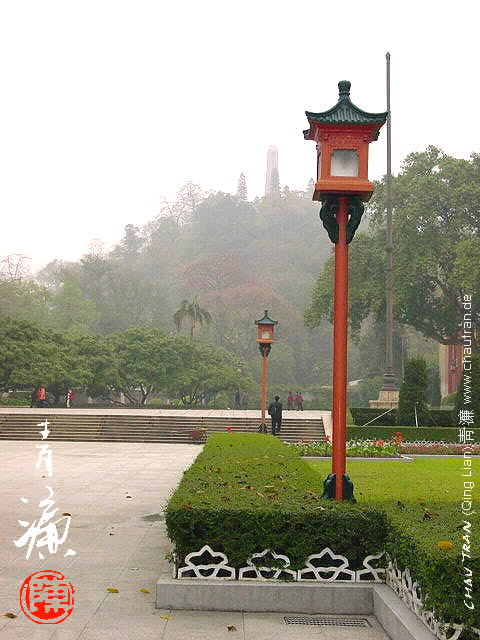
2001, The whole site around the memorialhall is very, very spacious, including the hill with the obelisk in the background. - Chau Tran (Qing Lian)
|
|
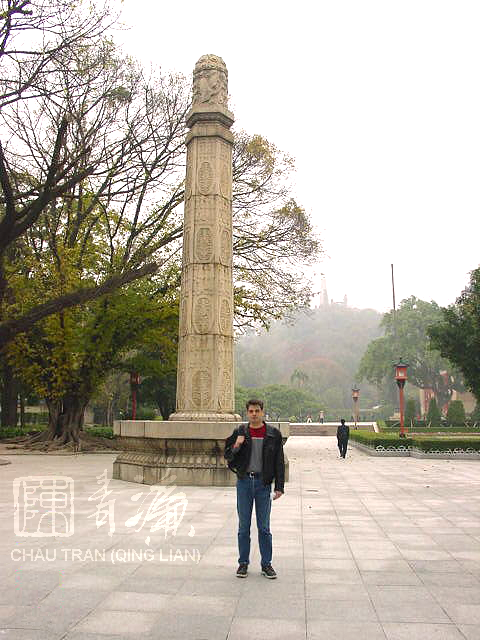
2001, Thomas in front of another obelisk on the forecourt of the memorial hall. - Chau Tran (Qing Lian)
|
|
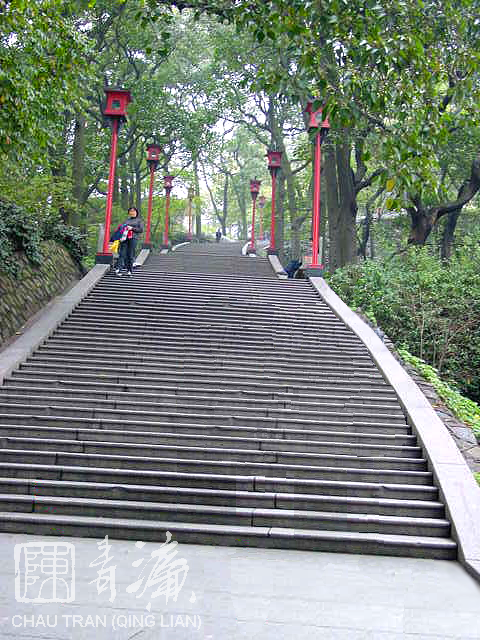
2001, On the way to "Yue Xiu Shan / Extraordinary beautiful hill" where the 5-goats-statue is, a symbol of the city of Guangzhou. - Chau Tran (Qing Lian)
|
|
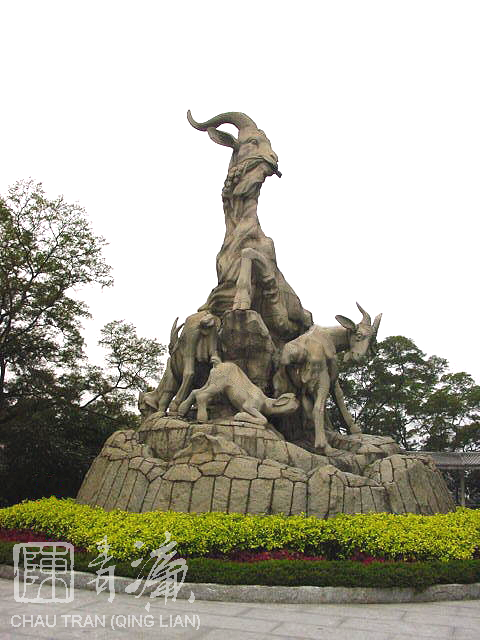
2001, The 5-goats-statue, symbol of the city of Guangzhou. - Chau Tran (Qing Lian)
|
|
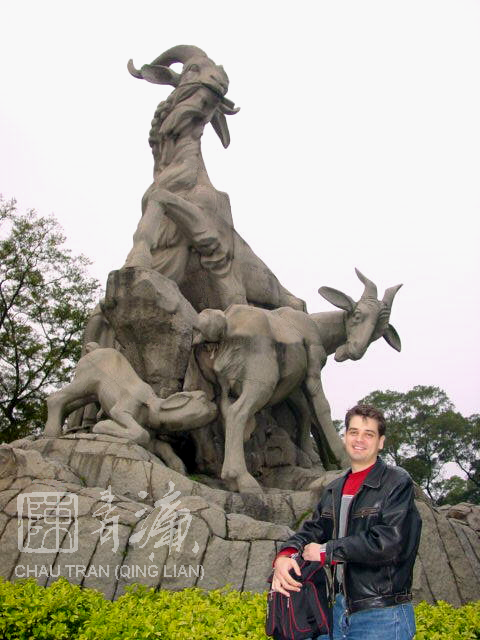
2001, Thomas stands far away from the statue in the background to have it on the photo completely. The statues is much bigger than it appears on this picture. - Chau Tran (Qing Lian)
|
|
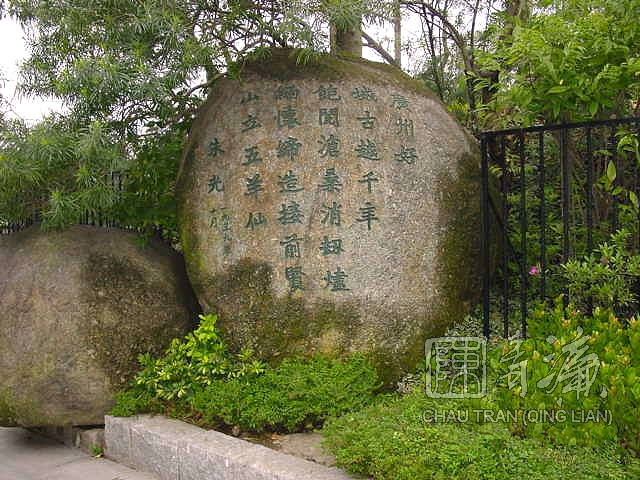
2001, A short text about the 5-goat-city is carved into this rock. - Chau Tran (Qing Lian)
|
|
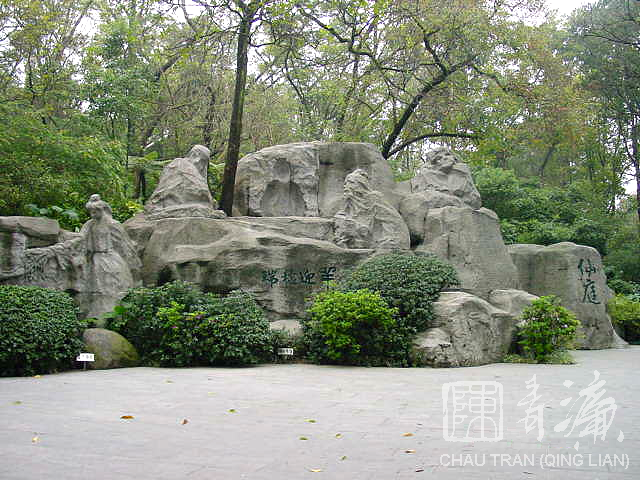
2001, A large group of statues (from which you can see a part of on this picture) is situated on the hill "Yue Xiu Shan / Extraordinary beautiful hill". It tells of the famous legend of the city of the 5 goats. - Chau Tran (Qing Lian)
|
|
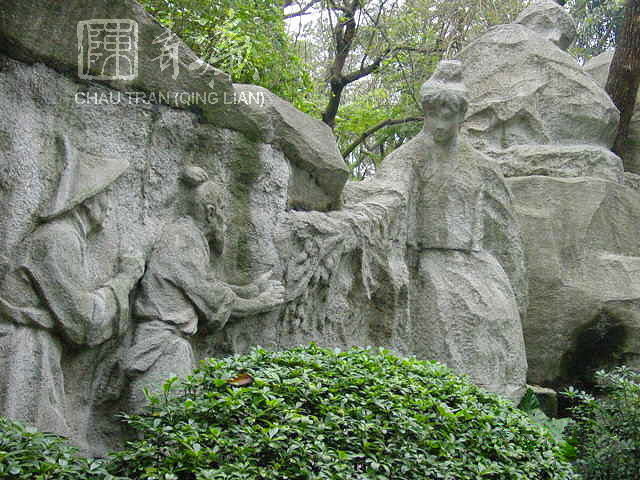
2001, Once upon a time ... there was a famine due to a bad crop. But the evil authorities exploited the people with higher taxes. 5 Tao-gods came with 5 goats to help the people. They gave rice-seeds to the people (see photo) and punished the evil authorities. When they left the people, the gods left behind the 5 goats. (In chinese customs and traditions the goat stands for the material luck) . . . . . - Chau Tran (Qing Lian)
|
|

2001, . . . . . since then the area is fertile, the people have a good crop and live happily ever after, that is how the 5-goats-city evolved. - Chau Tran (Qing Lian)
|
|
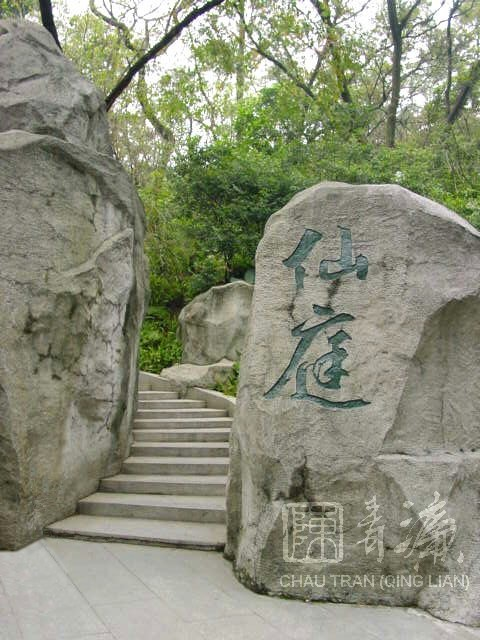
2001, "Xian ting / Heavenly level, where the Tao-gods are". - Chau Tran (Qing Lian)
|
|

2001, A round tour on the "Yue Xiu Shan". - Chau Tran (Qing Lian)
|
|
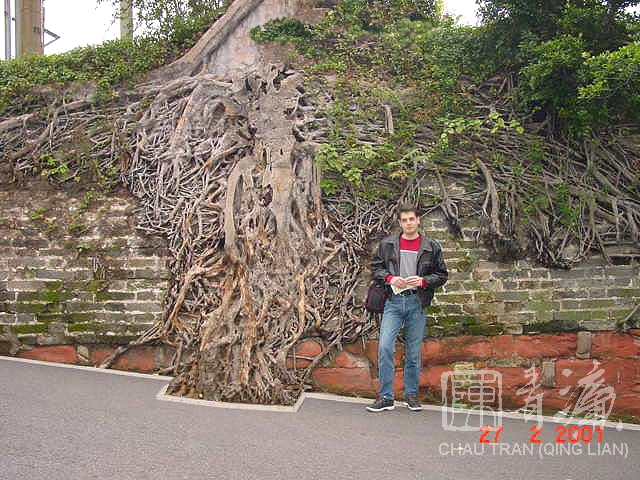
2001, A very old tree on the hillpath. - Chau Tran (Qing Lian)
|
|

2001, The Guangzhou-museum is situated on the "Yue Xiu Shan" and a must for visitors. - Chau Tran (Qing Lian)
|
|
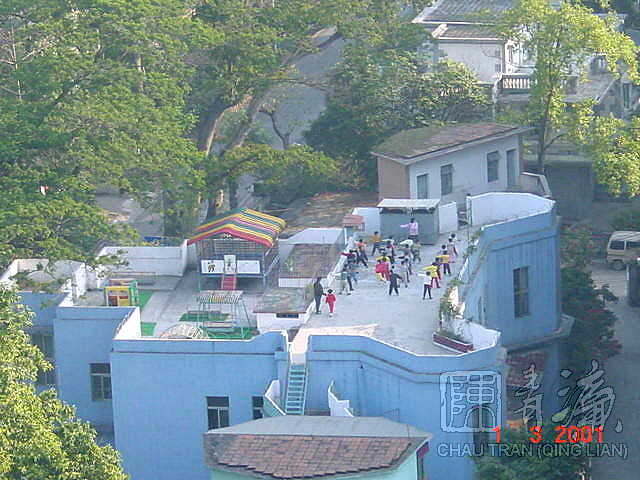
2001, View from the hotelroom: Children are doing gymnastics on the roof of the preschool. - Chau Tran (Qing Lian)
|
|
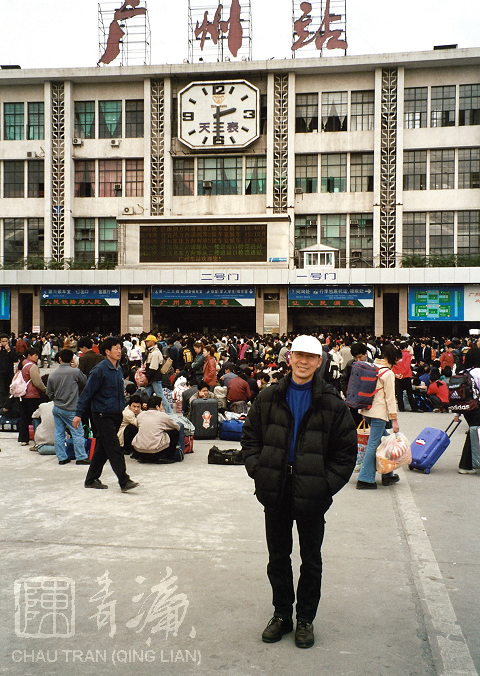
2001, We intend to travel to Shao Qing by train. When arriving at the station forecourt of Guangzhou-station we dismiss this idea, because I want to protect my mother from this large crowd. - Chau Tran (Qing Lian)
|
|
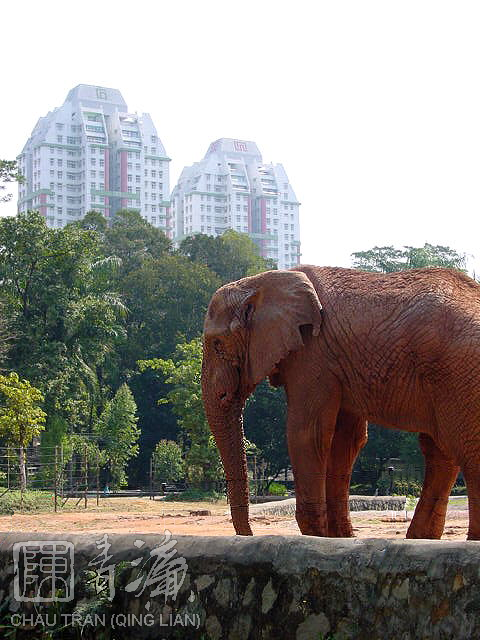
2001, Singapore-Zoo is very famous for the best animal welfare in the world. In my opinion animals should live protected in their natural environment. In europe, especially in Germany, there are too many zoos. They are too small, badly equipped and do not offer sufficient possibilities for retreat. Here in Guangzhou-zoo the big animals have a lot of space. - Chau Tran (Qing Lian)
|
|
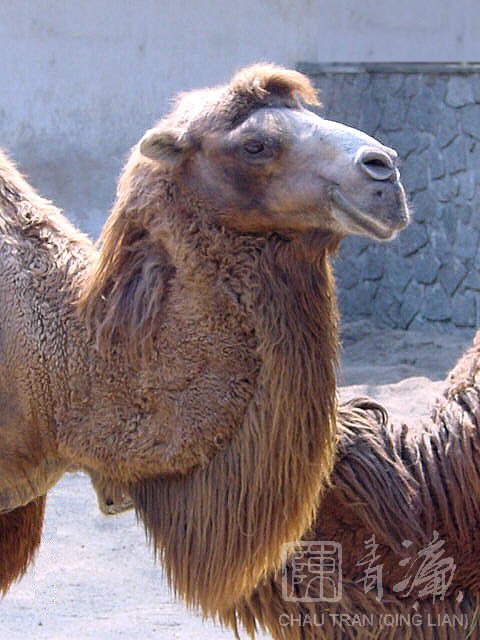
2001, Chinas deserts are also home for camels. - Chau Tran (Qing Lian)
|
|
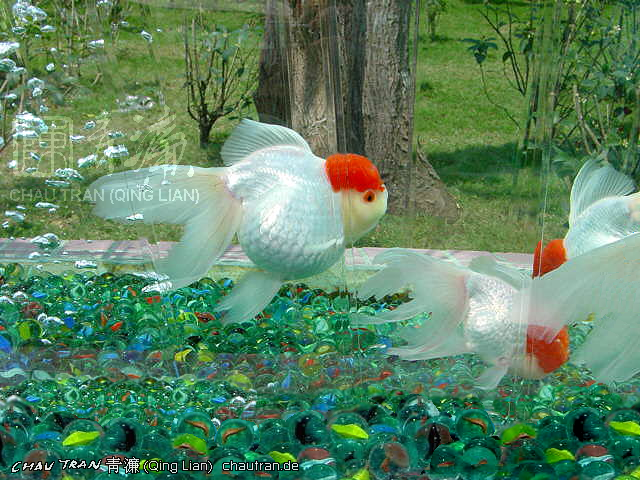
2001, One main reason for our visit in Guangzhou-Zoo are the chinese goldfish in fishtanks under open sky. There are more than 100 different kinds. Goldfish are my favourite fish, which I often dealt with in chinese paintings in earlier times. Here you can see a royal family in silverdress with a red crown. - Chau Tran (Qing Lian)
|
|
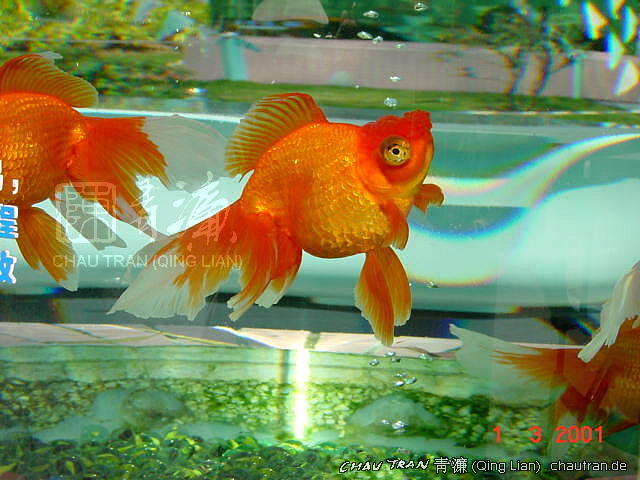
2001, These golden ladies are decorated with two flowers right on their head. - Chau Tran (Qing Lian)
|
|
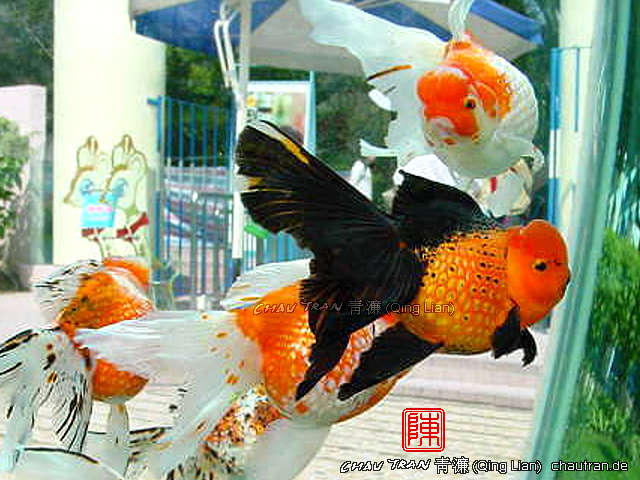
2001, These rich pearlscales adorn their dresses with precious pearls. - Chau Tran (Qing Lian)
|
|

2001, This stargazer can't stand the sight of people anymore. - Chau Tran (Qing Lian)
|
|
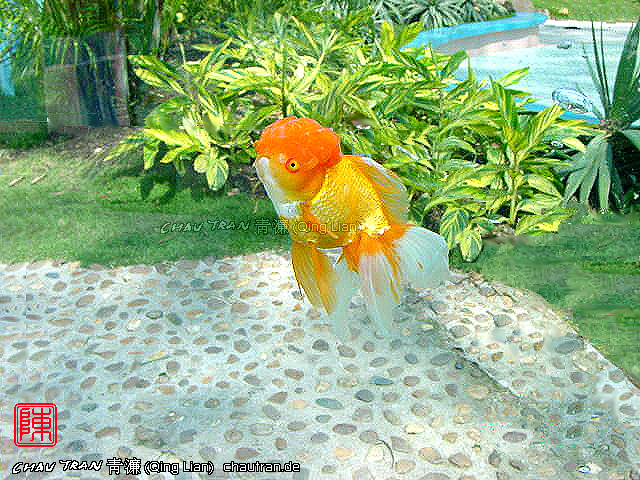
2001, Thanks to the clear water and the glass pane the lionhead can swim in the air. - Chau Tran (Qing Lian)
|
|
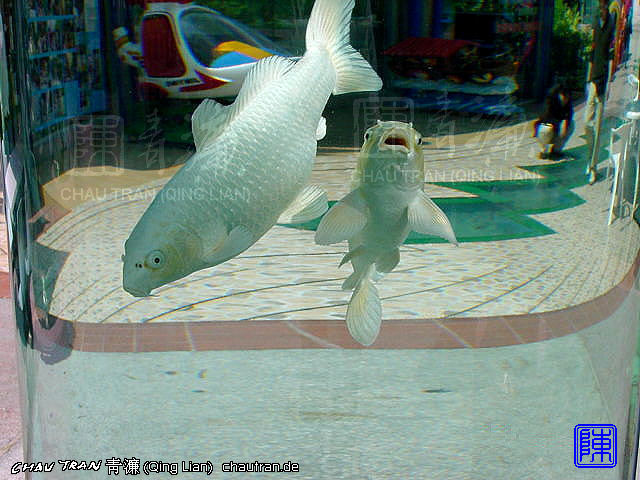
2001, These rare Li-fish have shiny silverscales. - Chau Tran (Qing Lian)
|
|
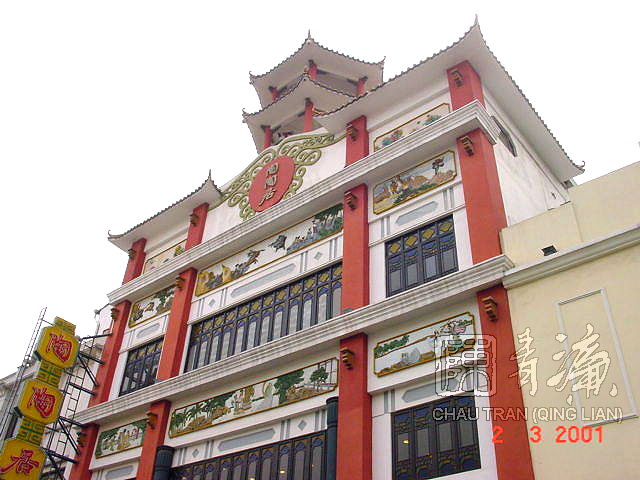
2001, Famous traditional chinese restaurant and sweets-house in Guangzhou old town. - Chau Tran (Qing Lian)
|
|
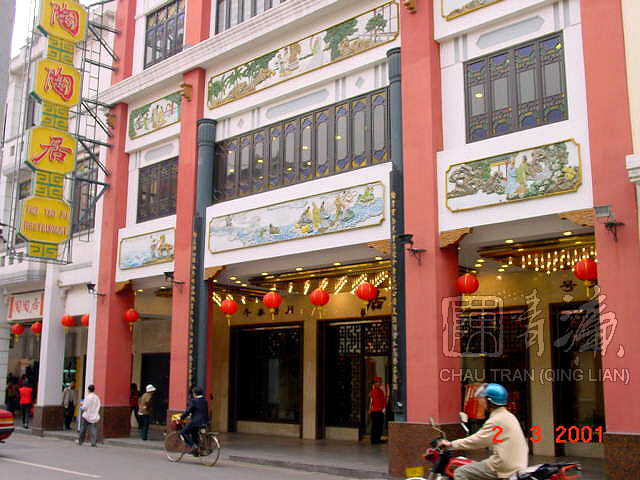
2001, The front shows the newchina-style from the time after the Qing-dynasty. - Chau Tran (Qing Lian)
|
|
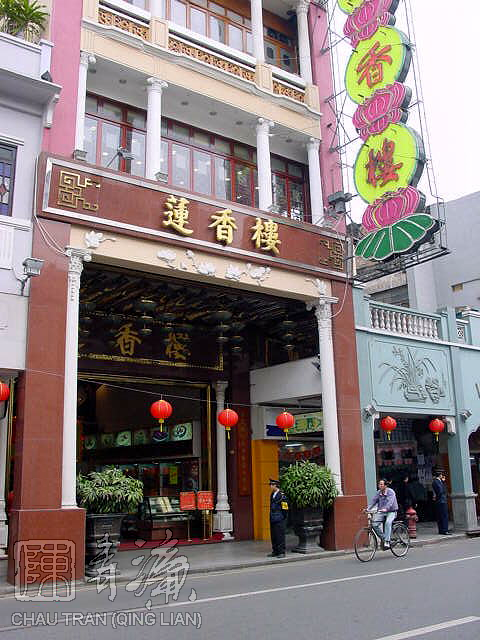
2001, This traditional restaurant and sweets-house is called "lotus-scent high-riser". - Chau Tran (Qing Lian)
|
|
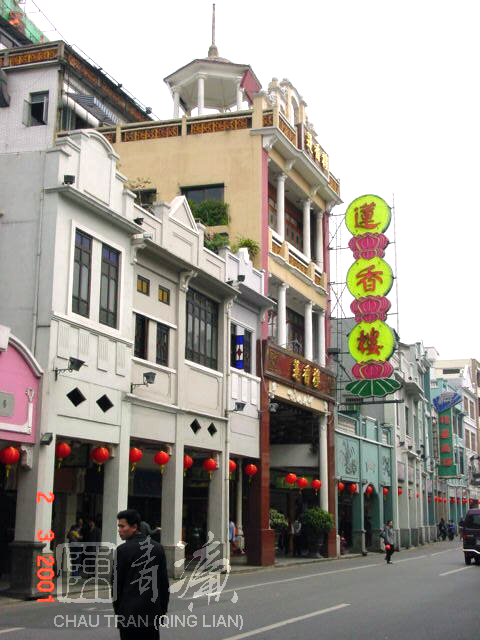
2001, The houses in Guangzhou-oldtown are well refurbished and the districts became very hygienic. - Chau Tran (Qing Lian)
|
|
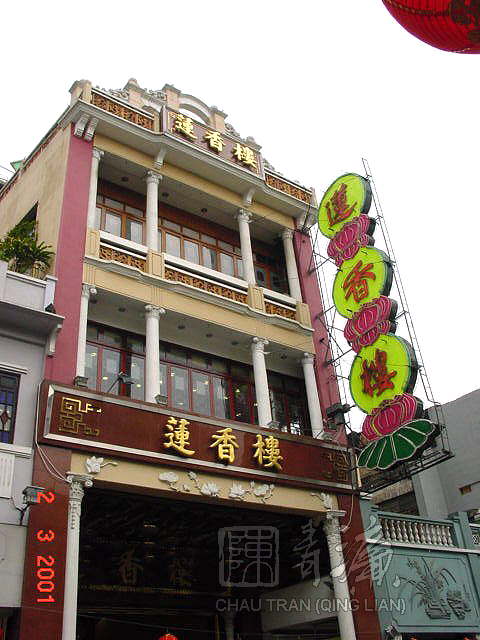
2001, View to the upper floor of the "lotus-scent high-riser". - Chau Tran (Qing Lian)
|
|
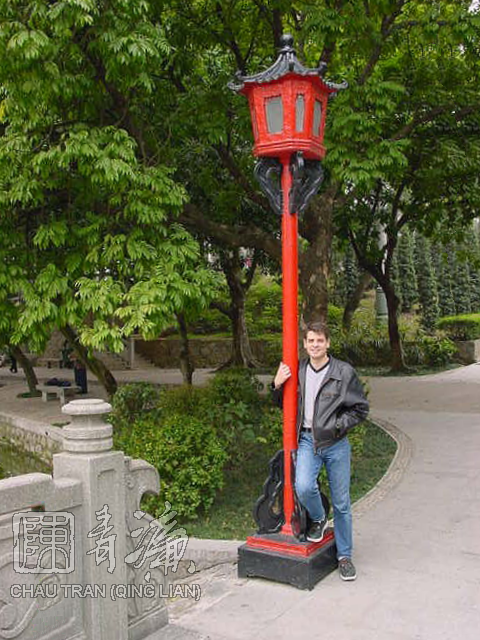
2001, In every park and public site in Guangzhou the lanterns have the standard colour red. But every place has its own style. For example here in this park, the lanterns are octagonal. - Chau Tran (Qing Lian)
|
|
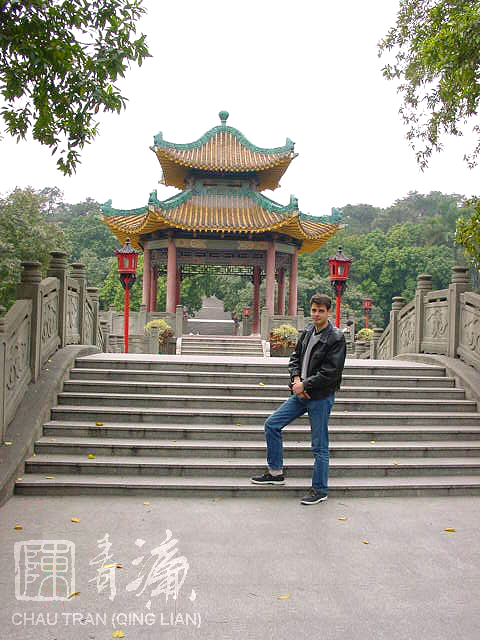
2001, A pavillon was built in the middle of this wavebridge. - Chau Tran (Qing Lian)
|
|
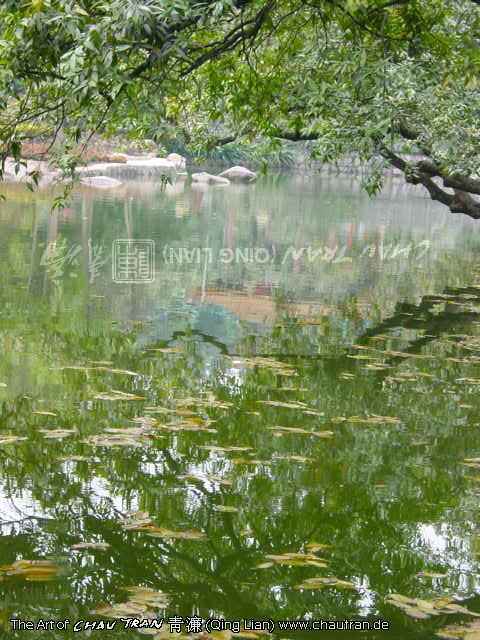
2001, From this pavillon we can enjoy the sea-scenery. The water is very calm. From this silence of the water I feel a harmonic sound in me, creating much power. This power makes the circle of life moving. - Chau Tran (Qing Lian)
|
|
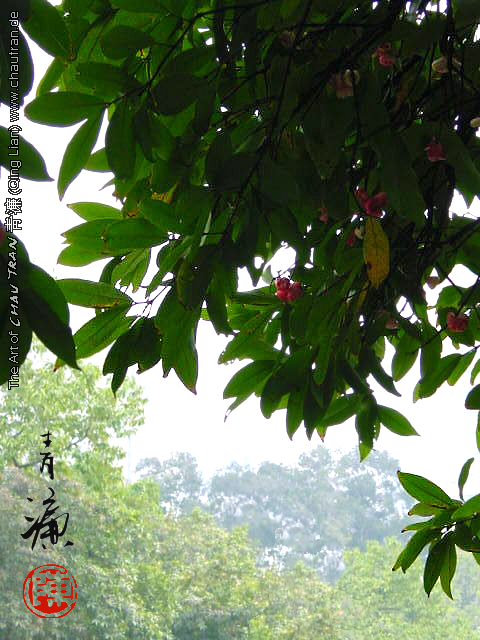
2001, The air is clear and fresh, one can feel the trees breathing and the park seems to be exclusively for us. - Chau Tran (Qing Lian)
|
|
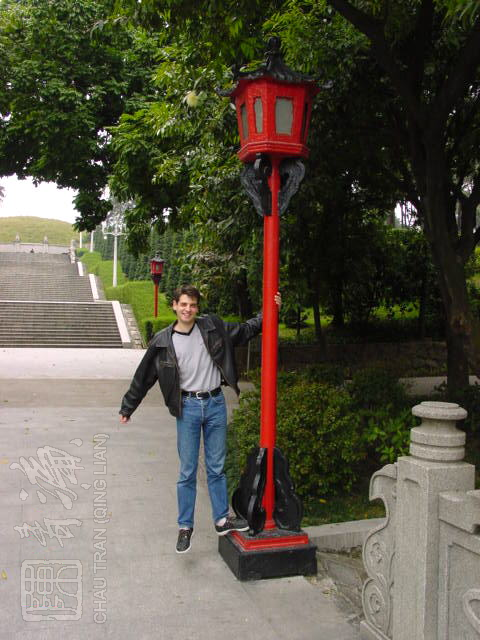
2001, Thomas is some steps ahead and sees a staircase, which leads up a hill. - Chau Tran (Qing Lian)
|
|
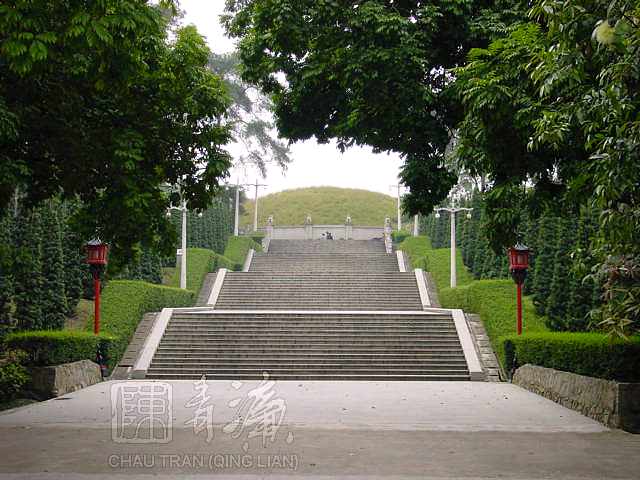
2001, The staircase is wide and elegant, like many staircases is China. - Chau Tran (Qing Lian)
|
|
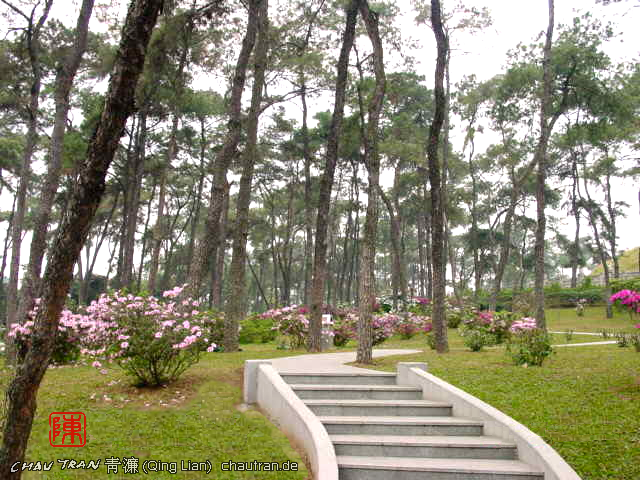
2001, On the hill it is like described in old chinese literature: "Feng He Ri Li / The wind is harmonic, the daylight is beautiful" . . . . - Chau Tran (Qing Lian)
|
|
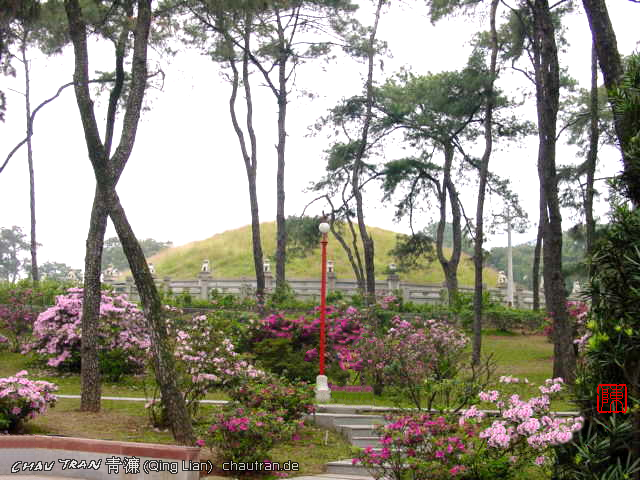
2001, . . . . "Niao Yu Hua Xiang / The birds chatter and the flowers are fragrant" - Chau Tran (Qing Lian)
|
|
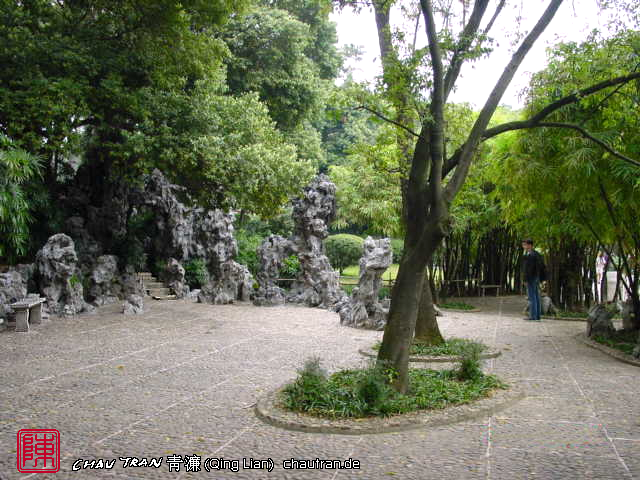
2001, When we follow the bird songs we come to this spot. The square is surrounded by trees and plants. It is like a concert hall with a bird orchestra. Every bird shows his best singing and dancing. It is mating season! There is another small staircase, that leads up to an artful created stonelabyrinth.
What I see, when I arrive in the middle of the labyrinth, is something that brings me back to my childhood. I will never forget that atmosphere, it is like in a fairytaleworld! . . . Somewhere in the real world there are such magical places . . . and hopefully . . . they are not destroyed by war! - Chau Tran (Qing Lian)
|
|
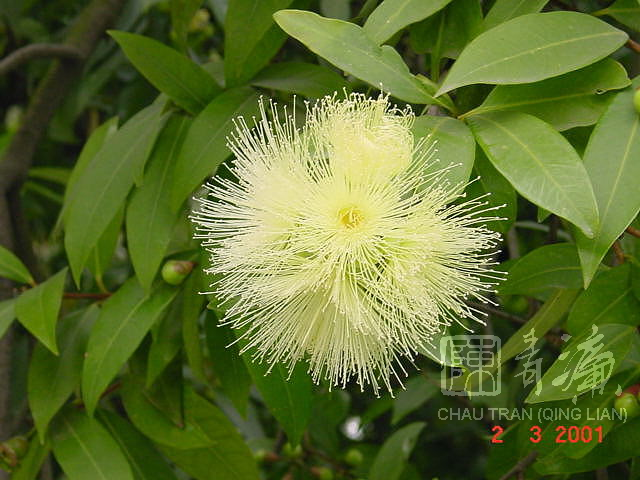
2001, The scent of eucalyptus is in the air of this park. - Chau Tran (Qing Lian)
|
|
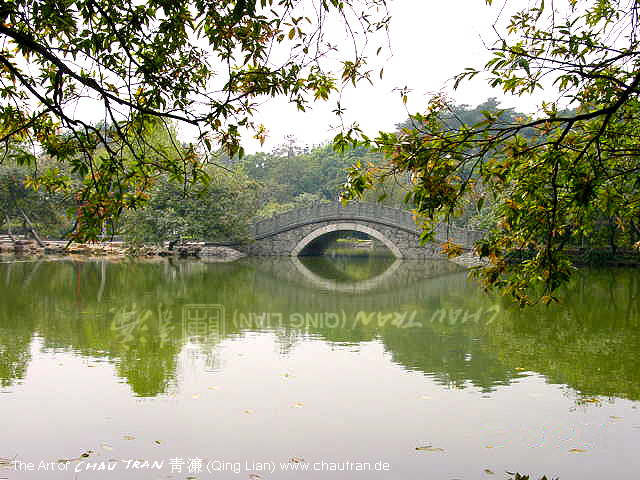
2001, The park is very, very large; Water always plays an important role in traditional chinese parks. - Chau Tran (Qing Lian)
|
|
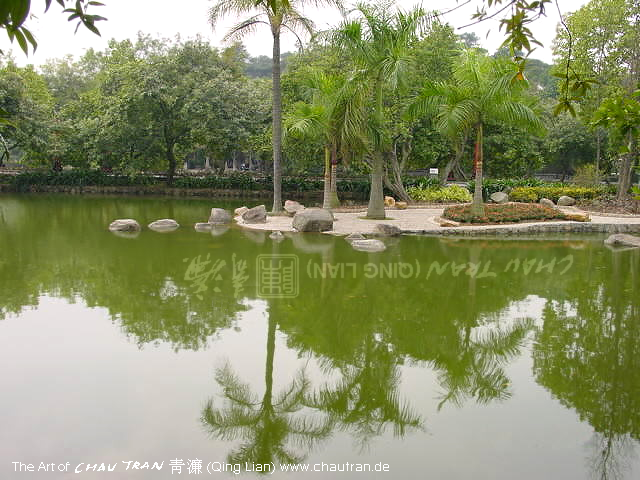
2001, The mirror always shows the truth. - Chau Tran (Qing Lian)
|
|

2001, One can relax and meditate in this idyllic athmosphere. In my opinion you don't have to be in a temple, monastery or in any community to meditate. You can do that at any place, but especially good in the open air, where man and nature are united. - Chau Tran (Qing Lian)
|
|
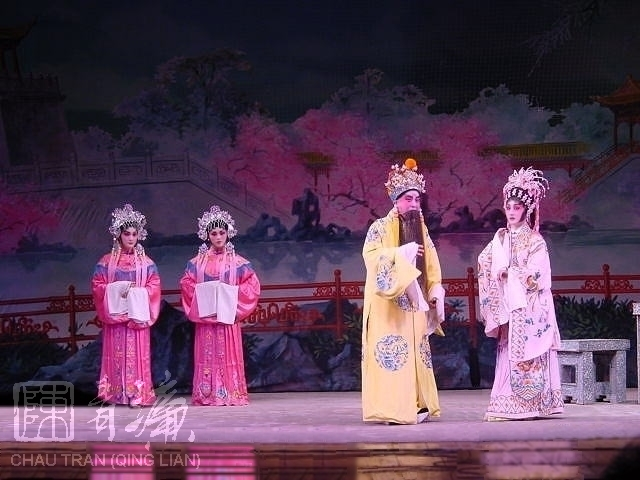
2001, At that time a cantonese operatroupe plays in Guangzhou. We don't want to miss that. In china every area has its own manners, customs, gastronomic culture and own dialect. Every dialect has its own opera. The main language is of course mandarin, the language of government of the country.
As a child in South Vietnam, where I grew up, I often visited Chaozhou-opera, cantonese opera and Peking-opera. Of course some vietnamese operas belonged to my favorites, like Hát Chèo, Cải Lương, Hát Bội, Cải Lương Hồ Quảng (The last two are related to chinese operas). In Saigon/Cholon there were up to eight Chaozhou-operatroupes, which played mainly on the occasion of temple-festivals. The cantonese operatroupes came from Hongkong for a guest performance. The Peking-operatroupes came from Taiwan.
Since I live in Europe some new favorites are the chinese Yue-opera and the Kun-opera, which I visit during my china-travels. Of course I also like to go to european operas with some friends, for example my favorites: "The magic flute", "Aida", "Madame Butterfly", "Turandot", "Rigoletto" and some operas by Wagner, operettas like "Die Fledermaus (The Bat)" and "Land of Smiles". When allowed I passionately take pictures from the stage and everything that happens around it. - Chau Tran (Qing Lian)
|
|
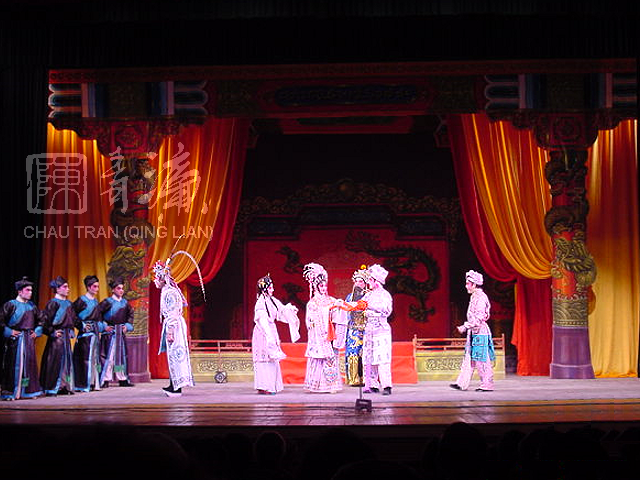
2001, Meanwhile the text of each opera-presentation is displayed in mandarin (occasionally in english), so the story line is understandable for everybody. - Chau Tran (Qing Lian)
|
|
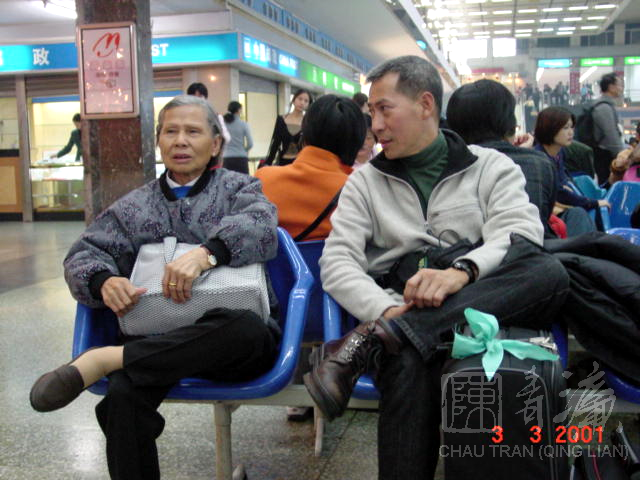
2001, On Guangzhou inland airport my mother, Thomas and me are wating for the flight to Guilin. - Chau Tran (Qing Lian)
|
|

2001, Thomas is looking forward to the next stop of our journey. - Chau Tran (Qing Lian)
|
Singapore -
Australia -
China/Shantou -
China/Guangzhou -
China/Guilin -
China/Hongkong -
Australia -
Singapore
|




























































































